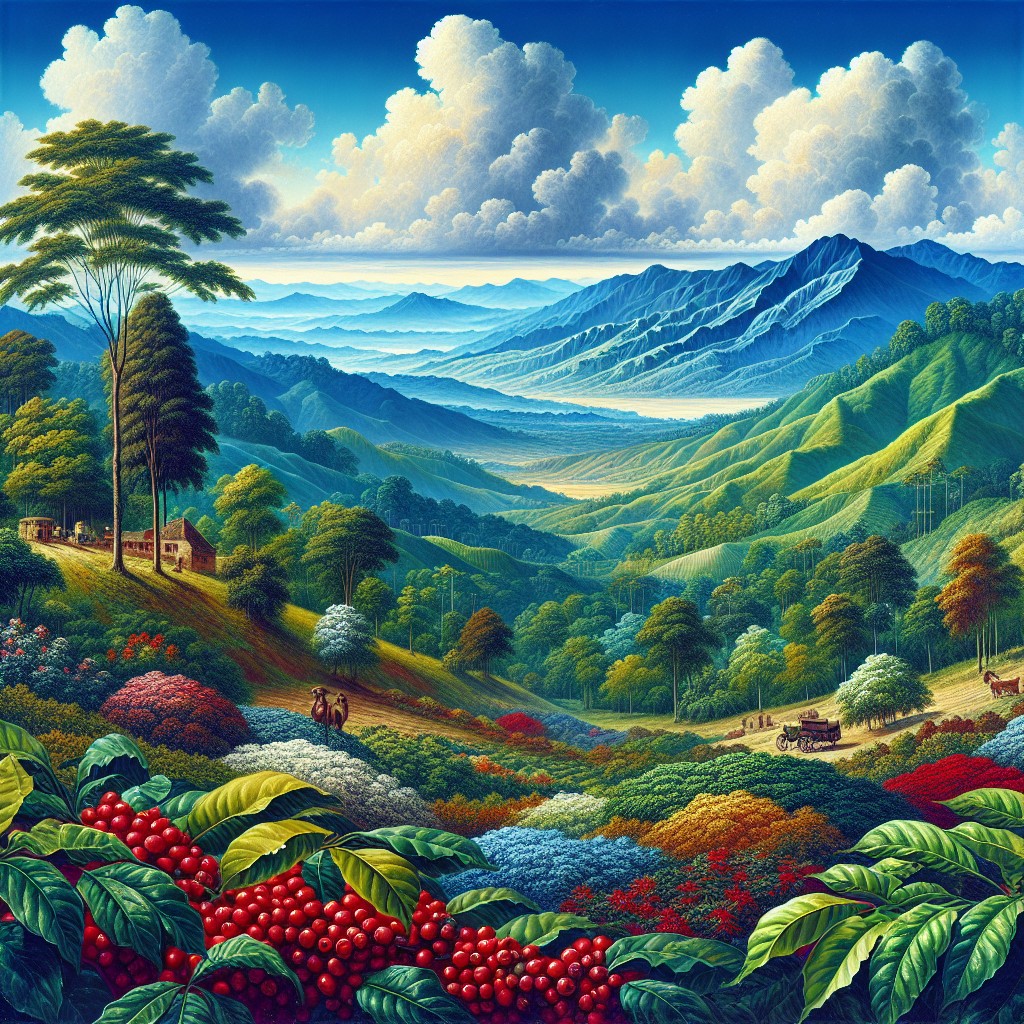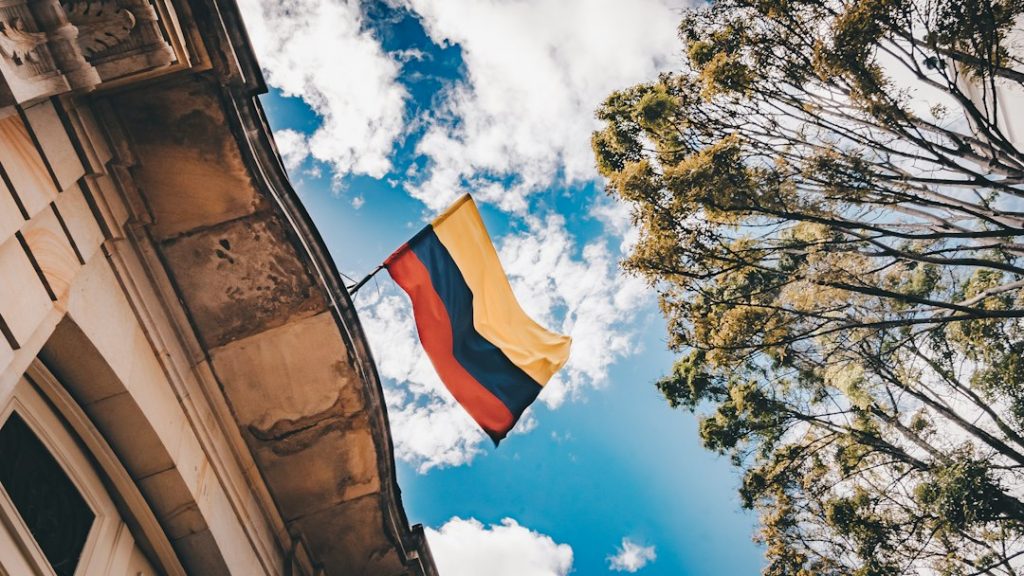Colombia, located in the northwest corner of South America, is a country with a rich and complex history. From its indigenous peoples to Spanish colonization, from independence to civil war and drug cartels, Colombia’s past has shaped its present in profound ways. Understanding Colombia’s history is crucial for comprehending the challenges and opportunities the country faces today.
Summary
- Indigenous peoples inhabited Colombia before the arrival of the Spanish.
- Spanish conquest and colonial rule brought about significant changes in Colombian society.
- Colombia gained independence in the early 19th century and formed a republic.
- Conservative and liberal parties dominated Colombian politics for much of the 20th century.
- The Colombian civil war, known as La Violencia, resulted in the deaths of hundreds of thousands of people.
- Drug cartels rose to power in Colombia in the 1980s and 1990s, but have since declined.
- Colombia played a significant role in the Cold War and the War on Drugs.
- The Colombian peace process has involved negotiations with guerrilla groups.
- Contemporary Colombian politics face challenges and opportunities.
- Colombia has a rich cultural heritage in music, art, and literature.
Pre-Columbian Era: The Indigenous Peoples of Colombia
Before the arrival of the Spanish, Colombia was home to a diverse array of indigenous groups. These groups, such as the Muisca, Tayrona, and Quimbaya, had their own unique cultures, traditions, and ways of life. The Muisca, for example, were known for their advanced agricultural practices and their use of gold in religious ceremonies. The Tayrona built impressive stone structures and had a complex social hierarchy.
However, the arrival of the Spanish in the 16th century had a devastating impact on these indigenous populations. Many were enslaved or killed, and their lands were taken over by the colonizers. The indigenous peoples of Colombia continue to face challenges today, including discrimination and marginalization.
Spanish Conquest and Colonial Rule in Colombia
The Spanish conquest of Colombia began in 1499 with the arrival of Alonso de Ojeda. Over the next few decades, Spanish conquistadors such as Gonzalo Jiménez de Quesada and Sebastián de Belalcázar explored and conquered various regions of Colombia. By the mid-16th century, Spain had established colonial rule over the territory.
Colonial rule had a profound impact on Colombian society. The Spanish brought with them their language, religion (Catholicism), and social structure. They also introduced new crops and animals to the region, transforming the landscape and economy. However, colonial rule also led to the exploitation and mistreatment of indigenous peoples and African slaves brought to Colombia.
Resistance and rebellion against Spanish rule were common throughout Colombia’s colonial period. One notable example is the rebellion led by Túpac Amaru II in the late 18th century. Despite these efforts, it was not until the early 19th century that Colombia, along with other Latin American countries, began to fight for independence.
Independence and the Formation of the Republic of Colombia
The movement for independence in Colombia was led by key figures such as Simón Bolívar and Francisco de Paula Santander. Bolívar, often referred to as the “Liberator,” played a crucial role in liberating several South American countries from Spanish rule. In 1819, Bolívar and his forces defeated the Spanish at the Battle of Boyacá, leading to the formation of Gran Colombia, which included present-day Colombia, Venezuela, Ecuador, and Panama.
However, Gran Colombia was short-lived, and by 1831 it had dissolved into separate countries. The Republic of Colombia was established, with Bogotá as its capital. The early years of the republic were marked by political instability and regional conflicts.
The Era of Conservative and Liberal Parties in Colombian Politics
In the late 19th and early 20th centuries, two political parties emerged as dominant forces in Colombian politics: the Conservative Party and the Liberal Party. These parties represented different social and political ideologies and were often at odds with each other.
The Conservative Party was associated with traditional values, the Catholic Church, and the interests of the elite. The Liberal Party, on the other hand, advocated for progressive reforms, secularism, and the rights of the working class.
The political and social divisions between these two parties often led to violence and conflict. This period became known as “La Violencia,” a civil war that lasted from 1948 to 1958. La Violencia resulted in the deaths of hundreds of thousands of Colombians and had a lasting impact on the country’s political and social landscape.
The Colombian Civil War: La Violencia
La Violencia was sparked by the assassination of Liberal Party leader Jorge Eliécer Gaitán in 1948. The assassination led to widespread riots and violence, with both Conservative and Liberal supporters engaging in acts of revenge and retaliation.
During this period, armed groups known as “guerrillas” emerged, representing both Conservative and Liberal factions. These guerrilla groups fought against each other and the government, further escalating the violence. The conflict also saw the rise of paramilitary groups, which were often aligned with the Conservative Party.
La Violencia came to an end in 1958 with the signing of the National Front agreement, which established power-sharing between the Conservative and Liberal parties. However, the scars of the civil war remained, and Colombia continued to face political instability and violence in the years that followed.
The Rise and Fall of Drug Cartels in Colombia
In the 1970s and 1980s, Colombia became a major hub for drug trafficking, particularly cocaine. Drug cartels such as the Medellín Cartel, led by Pablo Escobar, and the Cali Cartel gained immense power and wealth through their illicit operations.
The drug cartels had a significant impact on Colombian society. They were responsible for widespread violence, corruption, and the erosion of state institutions. The cartels also had a negative impact on Colombia’s international reputation.
Efforts to combat drug trafficking intensified in the 1990s, with the Colombian government working closely with the United States. Escobar was killed in 1993, and other cartel leaders were captured or killed in subsequent years. This marked a decline in the power and influence of the drug cartels.
Colombia’s Role in the Cold War and the War on Drugs
During the Cold War, Colombia was a key ally of the United States in its fight against communism. The U.S. provided military and financial aid to the Colombian government, which was engaged in a conflict with left-wing guerrilla groups such as the Revolutionary Armed Forces of Colombia (FARC).
The War on Drugs, initiated by U.S. President Richard Nixon in the 1970s, further intensified U.S. involvement in Colombia. The U.S. provided funding and support to the Colombian government in its efforts to combat drug trafficking.
However, U.S. involvement in Colombia has been controversial. Critics argue that it has led to human rights abuses, increased violence, and the displacement of rural communities. There have also been allegations of corruption and collusion between Colombian officials and drug traffickers.
The Colombian Peace Process: Negotiations with Guerrilla Groups
In recent years, Colombia has made significant progress towards peace and reconciliation. In 2016, the Colombian government signed a peace agreement with the FARC, bringing an end to more than five decades of armed conflict.
The peace process was a complex and lengthy negotiation involving multiple stakeholders. Key players included Colombian President Juan Manuel Santos, FARC leader Rodrigo Londoño (also known as Timochenko), and international mediators such as Cuba and Norway.
While the peace agreement has been hailed as a historic achievement, it has faced challenges and setbacks. Implementation has been slow, and there are concerns about the reintegration of former combatants into society. Additionally, other armed groups, such as the National Liberation Army (ELN), continue to pose a threat to peace and stability in Colombia.
Contemporary Colombian Politics: Challenges and Opportunities
Colombia’s political landscape remains complex and dynamic. The country faces numerous challenges, including corruption, inequality, drug trafficking, and violence. There are also ongoing conflicts with armed groups and challenges related to land rights and environmental issues.
However, Colombia also has significant opportunities for growth and development. The country has a diverse economy, with sectors such as agriculture, mining, manufacturing, and tourism contributing to its GDP. Colombia is also known for its natural beauty and cultural heritage, which attracts tourists from around the world.
The current government, led by President Iván Duque, faces the task of addressing these challenges and seizing these opportunities. It will require strong leadership, effective governance, and inclusive policies to ensure a prosperous and peaceful future for Colombia.
Cultural Heritage of Colombia: Music, Art, and Literature
Colombia has a rich cultural heritage that is reflected in its music, art, and literature. Colombian music is diverse and vibrant, with genres such as cumbia, vallenato, salsa, and reggaeton gaining international popularity. Artists such as Shakira, Juanes, and Carlos Vives have achieved global success.
Colombian art is also renowned for its creativity and diversity. Artists such as Fernando Botero are known for their distinctive style and use of exaggerated proportions. Colombian literature has produced notable figures such as Gabriel García Márquez, who won the Nobel Prize in Literature in 1982 for his novel “One Hundred Years of Solitude.”
Colombian culture has had a significant impact on the world stage. Its music, art, and literature have not only entertained and inspired people around the globe but have also challenged stereotypes and provided a platform for social and political commentary.
Colombia’s history is complex and multifaceted, shaped by indigenous cultures, Spanish colonization, independence struggles, civil war, drug cartels, and peace negotiations. Understanding this history is crucial for comprehending the challenges and opportunities that Colombia faces today.
While Colombia has made significant progress in recent years towards peace and development, it still faces numerous challenges. Political instability, violence, inequality, corruption, and drug trafficking continue to pose significant obstacles to progress.
However, Colombia also has immense potential for growth and prosperity. Its rich cultural heritage, natural beauty, and diverse economy provide opportunities for tourism, trade, and innovation. By addressing its challenges and building on its strengths, Colombia can continue to move towards a brighter future. Continued study and understanding of Colombia’s past and present are essential for navigating this path forward.
FAQs
What is the history of Colombia?
Colombia has a rich and diverse history that dates back to pre-Columbian times. The country was inhabited by various indigenous groups, including the Muisca, Quimbaya, and Tairona, before the arrival of the Spanish in the 16th century.
When did Colombia gain independence?
Colombia gained independence from Spain on July 20, 1810, after a series of uprisings and battles led by revolutionary leaders such as Simón Bolívar and Francisco de Paula Santander.
What was the role of drug cartels in Colombia’s history?
Drug cartels played a significant role in Colombia’s history during the late 20th century. The Medellín and Cali cartels were two of the most powerful criminal organizations in the world, responsible for trafficking large quantities of cocaine and other drugs. The violence and corruption associated with the cartels had a profound impact on Colombian society and politics.
What is the current political situation in Colombia?
Colombia is a democratic republic with a president as the head of state and government. The country has a multi-party system, and elections are held every four years. The current president of Colombia is Iván Duque, who took office in August 2018.
What are some of Colombia’s cultural traditions?
Colombia has a rich and diverse cultural heritage that reflects its indigenous, African, and European roots. Some of the country’s cultural traditions include music and dance, such as cumbia, salsa, and vallenato, as well as festivals and celebrations, such as the Barranquilla Carnival and the Medellín Flower Fair. Colombian cuisine is also known for its variety and flavour, with dishes such as arepas, empanadas, and bandeja paisa being popular throughout the country.


